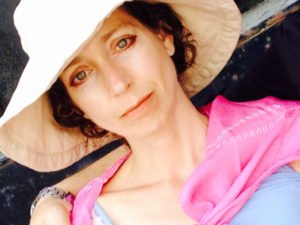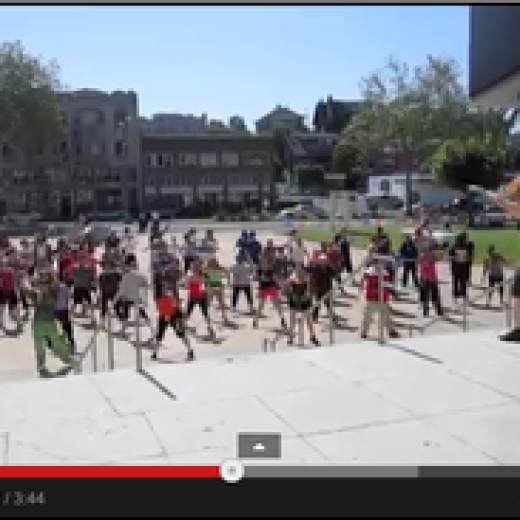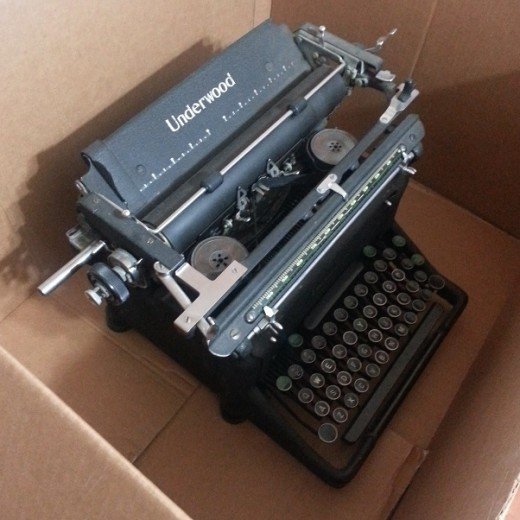How Did I Write This Thing? Jane is Everywhere by Crystal Jo Reiss
 Today we welcome a new guest writer to Writer’s Fun Zone, Crystal Jo Reiss who is stopping by to chat with us today about “How Did I Write This Thing? Jane is Everywhere” Enjoy!
Today we welcome a new guest writer to Writer’s Fun Zone, Crystal Jo Reiss who is stopping by to chat with us today about “How Did I Write This Thing? Jane is Everywhere” Enjoy!
***
Over the years, there have been countless books about the writing process. Some of the best known, like Anne Lamott’s Bird by Bird or Ursula Le Guin’s Steering the Craft, attempt to raid the imagination’s hardware store, shining a light on the nuts and bolts of this mysterious process called writing. In truth, the mystery can only begin to be revealed through direct experience.
And even after decades…
A writer still may not fully understand how he or she wrote the pages that appear in a book. What a crazy game it is!
Imagine you have wanted to write stories since you first laid eyes on a Dr. Seuss picture book. For years you read YA novels that inspire you to dream up your own. You scribble a few lines, maybe a few pages, before giving up, only to try again.
Eventually, maybe in college, you scratch out one hundred pages no one can stand to read—not even you—because you’ve had your head in too many tomes of literary criticism or have spent too many hours hovering over a centrifuge.
A decade later, after a slew of temp jobs—and maybe some long-term gigs that paid a little better—you try writing again. This time, because you can’t get a particular story out of your system, you stick with it. You get up three hours earlier than you should and park your butt in front of a computer.
You tap away, thinking this one will be a bestseller, and then you can quit your day job. And when you’re done with the “masterpiece/lump of coal” that some people might one day call a novel, you look at the pages, scratch your head, stare out the window, scratch your head again, and finally ask yourself one very unanswerable question: How the f–k did I write this thing?
Yeah, it’s true.
Nearly a decade in front of a computer (and about ten thousand cups of tea in between maybe five hundred freelance jobs) will do this to you.
Truth is, no one I know has ever been able to describe exactly how a novel gets written, except perhaps as an abstraction. Oh, yes, there’s the “three-to-four hours per day, 1,000-word minimum” answer that some writers throw at inquisitors daring enough to raise the subject. But please name the writer who can dive deeper (way deeper) than that.
So, after finally publishing a book is it absurd to ask myself what actually happened during the approximately 9,100 hours it took to write and then shape my novel, Jane Is Everywhere? I know that I began writing the piece with a sense of what I wanted readers to feel and what I wanted to convey, but I had no idea where the characters and plot would turn.
I know that much of the manuscript—the original 250,000 words that eventually lived in my computer—had to be hacked and sawed and chiseled and sanded down during more than fifteen full and maybe twenty half drafts.
I know that I sat in the Rockridge Library, day after day, through rain and shine, preferring a table upstairs in the reading room because the skylights allowed blocks of sunshine to hit the top of my head and, when it rained, gave off a gentle music—a patter patter sound—as I typed.
Finally, I know that much of the writing actually grew out of a conversation with a blank page and an amorphous “everyone” that would, I hoped, eventually read the result.
Like any conversation between people, it’s hard to follow the progression of subjects or characters entering and evolving into other subjects or characters while crafting a novel.
After all, writers are really following a conversation that lands on the page, squirms around with each revision, and then freezes in its final draft.
It’s true: characters and concepts become more concrete with each draft.
But, how did it start? And how did it end?
I began writing Jane Is Everywhere as a secret blog, because I liked the idea of writing for an audience. Yet, I didn’t want anyone to read it, so I eventually erased the blog from the webverse and pasted everything into a MS Word doc.
Beyond that, I can tell you that each word, sentence, new page bloomed into a massive and messy manuscript that seemed impossible to control.
As cliché as it sounds, it was like a bad hair day on steroids. I had too many characters (even more than now appear in the book, believe it or not!) with split ends, and I had a 100-page ancillary story that I intended to braid into the main story.
It all got too complicated. So, I cut the entire 100-page section, and I still had nearly 225,000 words. Everyone I spoke to told me that no 21st century editor in his or her right mind would consider a debut novel that massive. I cut more.
At 170,000 words, I sent queries to agents. I cut more, and there were more agents, and even a few publishers.
Years later, I now have a book. I look at its pink cover with its drawing of a woman staring at herself as she falls into what looks like an infinity mirror.
At times, I wonder if the woman on the cover is me. All those drafts. All those iterations of a story whose beginnings were invisible, hidden inside a blog that I knew no one would read.
Because there’s nothing else to do but wonder, in awe, at creation, I step back and see the entire process as a reflection of life, or an imprint of my own mind during the period in which I wrote the book.
Yes, we hardly know where or how we came to be who we are, or how we stumbled upon this place we call “here.” We simply exist. And now, so does Jane, who is everywhere, now that she (the novel) is complete.
***
ABOUT THE AUTHOR
 Crystal Jo Reiss has written fiction and articles for numerous publications, including The London Evening Standard. She has an M.F.A. in Creative Writing from Columbia University, attended The Squaw Valley Writer’s Conference, and was the recipient of residencies at The Edward Albee Foundation and Dorland Mountain Arts Colony. Her debut novel, Jane Is Everywhere, was published February 17, 2018. She has read from her novel at numerous San Francisco and Oakland reading series, including Word Performances, The Octopus Literary Salon, The Bindery, and The Beast Crawl. In addition, she is the co-founder of an editorial and design business called WE Write and Edit. She lives with her husband and son in Oakland, California.
Crystal Jo Reiss has written fiction and articles for numerous publications, including The London Evening Standard. She has an M.F.A. in Creative Writing from Columbia University, attended The Squaw Valley Writer’s Conference, and was the recipient of residencies at The Edward Albee Foundation and Dorland Mountain Arts Colony. Her debut novel, Jane Is Everywhere, was published February 17, 2018. She has read from her novel at numerous San Francisco and Oakland reading series, including Word Performances, The Octopus Literary Salon, The Bindery, and The Beast Crawl. In addition, she is the co-founder of an editorial and design business called WE Write and Edit. She lives with her husband and son in Oakland, California.
Website: www.janeiseverywhere.com
Facebook: https://www.facebook.com/JaneIsEverywhere/
Twitter: http://www.twitter.com/CR27
Goodreads: https://www.goodreads.com/author/show/17438818.Crystal_Jo_Reiss







When I saw the first copy of my (sort-of) autobiography, WHERE MEMORY HIDES: A Writer’s Life…I Iold my editor that I loved the title, but wondered who had suggested it. My editor (Audrey Parente) said, “You did.” Some memory! But in any case I recommend autobiographical writing. We all do have hidden memories, some of them funny, some heartbreaking, some of them joyous, many of them enlightening. and writing this book brought many such bubbling up to the surface.
Well, I agree, Richard! Writing from personal experience is a journey that takes the writer deeper into the self. Sometimes, as you say, memories that were hidden reemerge. Fiction can also draw the writer into deeper, contemplative spaces. I think of writing as a kind of contemplation, a practice that can reveal what has been hidden or can even lead to premonition. For instance, back in 2011, well before the 2016 presidential campaign, two major political and cultural figures found their way into Jane Is Everywhere: Donald Trump and Steve Wynn. Now, in 2018, these two figures have come to the fore in a way they hadn’t in 2011. It’s fascinating to see what comes up when one writes.